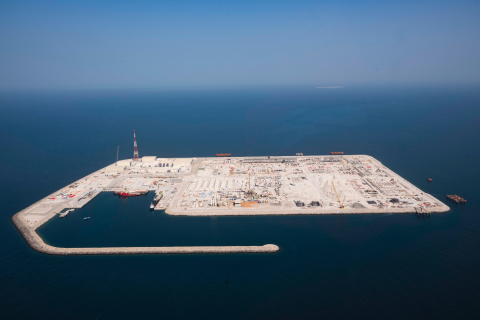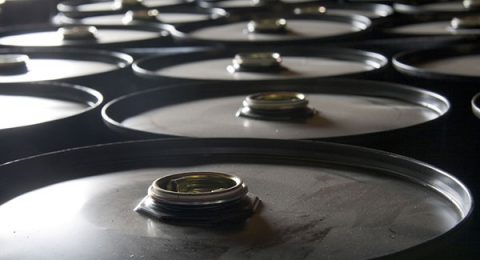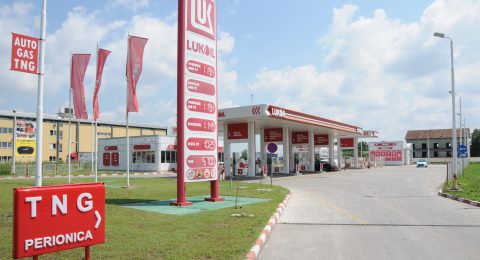During the past few months, Egypt witnessed several discoveries in its desert. This came after giving more attention to exploring the desert. Supporting this plan, the Ministry of Petroleum and Mineral Resources (MoP) has launched an exploration and production (E&P) bid round in February included blocks from the Western Desert. Most of Egypt’s crude production comes from its deserts. According to data released by the MoP, the country produces crude oil from its deserts that equaled 67.5% of its total production until 2019. Thus comes the necessity to keep desert fields a safe workplace and guarantee sustainable production at the same time.
Red Alert at Onshore Rigs
In those desert fields workers are expected to work for long hours – of approximately 12 hours per day- and this puts stress on them as all the time; this is in addition to the fact that they are constantly ready for any sudden incident that could happen especially when they are using heavy equipment. Also, they may work on hard environmental circumstances such as sand storms or high temperatures. With that, it is crucial to define the most common dangers that may occur in the onshore fields.
According to the Bureau of Labor Statistics, working on an oil rig carries a higher-than-average risk of nonfatal injury. There are four major types of accidents in onshore fields; Fire, Falls and Falling, Machinery, and Fatigue.
Fire
Fire could happen as a result of several chemicals that are regularly used in onshore drilling especially hydrogen sulfide. Also, the high pressure from the well can lead to an explosion if it is not repaired in time.
Falls and Falling Tools
Falls from higher to lower levels is another hazard that may face workers in onshore rigs leading to their death. Moreover, when workers drop tools to another worker this may cause injuries or fatalities, as well. In order to avoid that, workers wear hard hats to protect themselves.
Machinery
There are a lot of dangerous machines used in oil fields and can expose the workers to risk including the drill, spinning machinery and support units such as cranes and forklifts. These machines make noise which hinders the communication between workers so they cannot warn each other or be attention if there is a risk.
Fatigue
Fatigue is a hazardous reason for incidents in the oil fields as it may reduce the focus of the workers and slow their reactions. Fatigue happened as a result of long working hours. “According to the Bureau of Labor Statistics, onshore rig workers typically work between 7 and 14 days in a row, and each day entails between 8 and 12 hours of work.”
Improving Occupational Safety
Actually, it is important to find solutions that lower these incidents as much as possible in order to keep production from onshore sites. The International Finance Corporation has issued a publication showcasing some guidelines to be followed in order to guarantee a safe onshore workplace. It stated that repairing and maintenance activities should be done regularly to prevent leakage of flammable materials that can lead to a fire. It advised to regularly monitor the well and its pressure level to control it before the explosion.
The publication also said that “occupational hazards should be identified and assessed through an Occupational Hazards Management Plan, detailing prevention and mitigation measures (including operational procedures) to be considered. All workers should be made aware of the contents of this document through induction training.” In addition, it stressed on installing active fire protection systems to the facilities for rapid response in case of any danger. “Personnel should be provided with adequate and sufficient equipment,” the publication added.
As for hydrogen sulfide, the publication reported that hydrogen gas sulfide gas monitoring should be installed with the number and location of monitoring stations determined through air dispersion modeling, taking into account the location of emissions sources and areas of community use and habitation. For its part, the Occupational Safety and Health Administration (OSHA) has organized a campaign with National Occupational Research Agenda (NORA) for Fall Prevention. It stated that the employer should provide safety equipment and tools for workers when working from heights and train the workers on how to use the heavy equipment safely.
In Egypt, the MoP exerted every effort in this regard and still. It organized a lot of events and initiatives for raising awareness among the employees and workers about the importance of following safety guidelines. It selected OSHA standards regulation to be implemented in managing hazards in the work processes and ensure the availability of a safe and secure working environment for the sector’s employees. A case study published by Al-Ahram gate discussed how Khalda Petroleum company provides a safe environment for its employees in Al-Salam field showcasing the measures taken by the company in this regard.
This includes wearing personal protective equipment while working, taking permission for working from heights, working on energy insulation, lifting works, working in enclosed areas and excavation works, avoiding smoking, using mobile phones and lighters, and guiding the newcomers about the hazards of the site. One of the employees mentioned that they are using advanced technologies to monitor and control well pressure to avoid explosions. This is in addition to the fact that suitable equipment is used to deal with dangers and workers were well-trained to use them. Thus, the precautions adopted by the Egyptian oil industry reflect good indications for safer onshore sites, which in turn, encourages more discoveries and explorations to take place in a sustainable manner.








